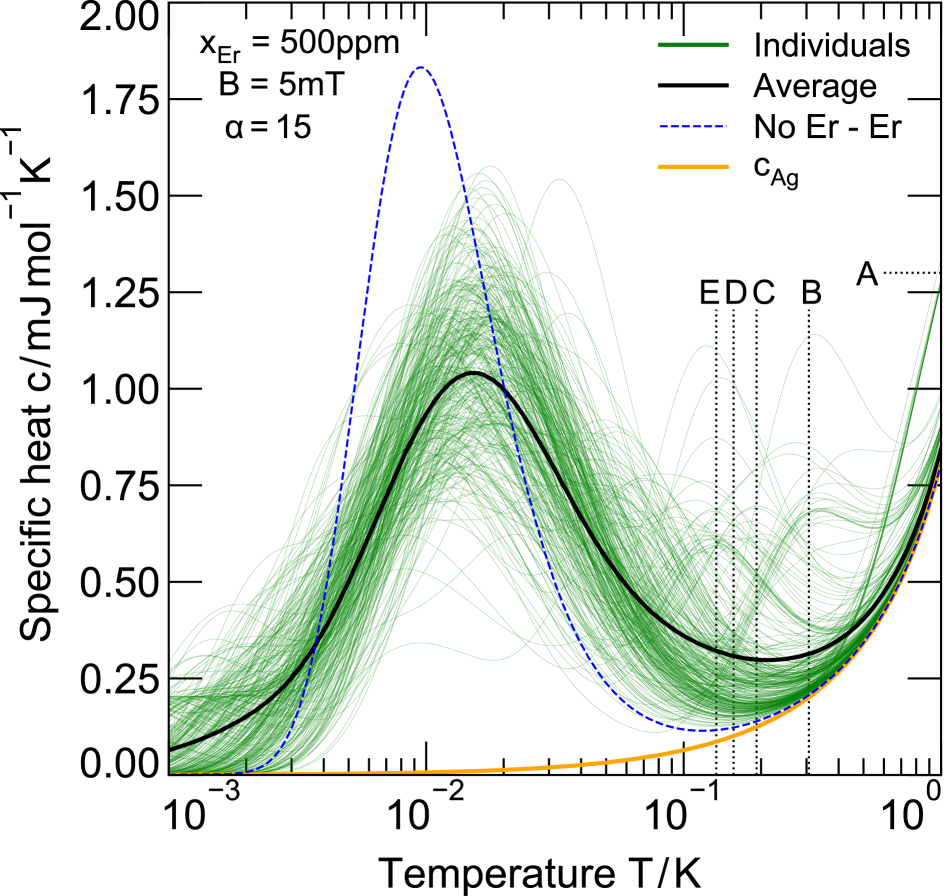Specific Heat of Holmium in Gold and Silver at Low Temperatures
M Herbst, A Reifenberger, C Velte et al., J Low Temp Phys 202, 106–120 (2021).
The specific heat of dilute alloys of holmium in gold and in silver plays a major role in the optimization of low temperature microcalorimeters with enclosed 163Ho, such as the ones developed for the neutrino mass experiment ECHo. We investigate alloys with atomic concentrations of xHo = 0.01-4% at temperatures between 10 and 800mK. Due to the large total angular momentum J = 8 and nuclear spin I = 7/2 of Ho3+ ions, the specific heat of Au:Ho and Ag:Ho depends on the detailed interplay of various interactions, including contributions from the localized 4f electrons and nuclear contributions via hyperfine splitting. This makes it difficult to accurately determine the specific heat of these materials numerically. Instead, we measure their specific heat by using three experimental setups optimized for different concentration and temperature ranges. The results from measurements on six holmium alloys demonstrate that the specific heat of these materials is dominated by a large Schottky anomaly with its maximum at T ≈ 250mK, which we attribute to hyperfine splitting and crystal field interactions. RKKY and dipole–dipole interactions between the holmium atoms cause additional, concentration-dependent effects. With regard to ECHo, we conclude that for typical operating temperatures of T ≤ 20mK, silver holmium alloys with xHo ≳ 1% are suited best.



